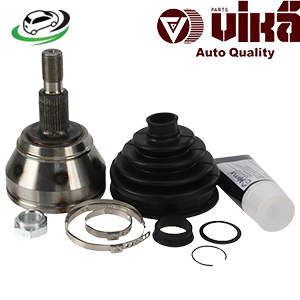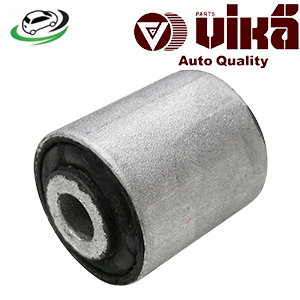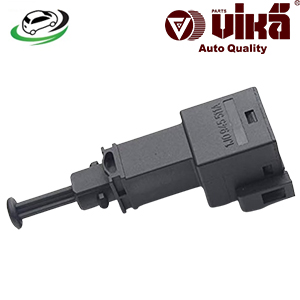-29%
Get Brake Light Stop Switch AUDI A3 8L1/S3 8L1/TT 8N3/TT 8N9 / VW Transporter 7EA/7EH/7HA/7HH /Polo 9N/ Polo 6N2/ Golf MKIV/Bora 1J2 1J0945511A
The brake light stop switch, commonly known as the brake light switch, is a critical component in a vehicle’s braking system. It plays a vital role in ensuring that the vehicle’s brake lights function correctly, providing essential safety signals to other drivers. This guide explores the function, design, common issues, maintenance, and troubleshooting of the brake light stop switch.
1. Purpose and Function of the Brake Light Stop Switch
The brake light stop switch is responsible for activating the brake lights when the driver presses the brake pedal. These lights serve as a critical safety feature, alerting drivers behind the vehicle that the brakes are engaged, thereby preventing rear-end collisions.
1.1. Activation of Brake Lights
- Pedal Activation: When the driver presses the brake pedal, the brake light switch is activated. This action completes an electrical circuit that turns on the brake lights located at the rear of the vehicle.
- Safety Signal: The illuminated brake lights serve as a signal to other drivers that the vehicle is slowing down or coming to a stop. This visibility is crucial for preventing accidents and ensuring safe driving conditions.
1.2. Additional Functions
- Cruise Control Interruption: In many modern vehicles, the brake light switch is integrated with the cruise control system. Pressing the brake pedal will deactivate the cruise control, allowing the driver to reduce speed or stop without having to manually disengage the system.
- Transmission Control: Some vehicles use the brake light switch to interact with the transmission control system, enabling features such as automatic transmission shifting or shifting lock-out when the brake pedal is pressed.
2. Design and Structure of the Brake Light Stop Switch
The brake light switch is designed to be a reliable and durable component, capable of withstanding the constant use and pressure from the brake pedal.
2.1. Switch Types
- Mechanical Switches: Traditional brake light switches use a mechanical plunger that makes contact with the brake pedal or pedal assembly. When the pedal is pressed, the plunger is pushed, closing the electrical circuit and turning on the brake lights.
- Electronic Switches: Modern vehicles may use electronic brake light switches that rely on sensors and electronic circuits. These switches provide more precise control and can integrate with other vehicle systems more effectively.
2.2. Key Components
- Housing: The housing encloses the internal components of the brake light switch and provides a mounting point for the switch on the brake pedal assembly or nearby bracket.
- Contact Mechanism: The contact mechanism includes the internal parts that create or break the electrical circuit when the brake pedal is pressed. In mechanical switches, this often involves a plunger and electrical contacts. In electronic switches, it involves sensors and circuitry.
- Adjustment Mechanism: Some brake light switches feature an adjustable mechanism that allows for fine-tuning the switch’s activation point to ensure proper brake light operation.
2.3. Mounting and Integration
- Pedal Assembly: The brake light switch is typically mounted near the brake pedal assembly. It is usually secured to a bracket or directly to the pedal assembly, depending on the vehicle design.
- Wiring Connections: The switch is connected to the vehicle’s electrical system via wiring harnesses. Proper wiring and connections are essential for reliable operation and to avoid electrical issues.
3. Common Issues and Symptoms
The brake light switch can experience various issues that affect its performance and the operation of the brake lights.
3.1. Faulty Brake Lights
- Inoperative Lights: If the brake lights do not illuminate when the brake pedal is pressed, it may indicate a faulty brake light switch. This issue can lead to decreased visibility and increased risk of accidents.
- Brake Lights Stay On: A malfunctioning switch can cause the brake lights to remain on continuously, even when the brake pedal is not pressed. This can be distracting to other drivers and may lead to brake light burnout.
3.2. Cruise Control Problems
- Cruise Control Malfunction: If the brake light switch is not functioning correctly, it can affect the operation of the cruise control system. The cruise control may not deactivate when the brake pedal is pressed, or it may not resume correctly after braking.
3.3. Transmission Issues
- Shift Lock Problems: In vehicles with automatic transmissions, a faulty brake light switch can cause issues with the shift lock mechanism. The transmission may not shift out of park or into gear properly if the switch is not functioning correctly.
4. Maintenance and Replacement
Regular maintenance and timely replacement of the brake light switch are essential for ensuring the proper functioning of the vehicle’s brake lights and related systems.
4.1. Inspection and Testing
- Visual Inspection: Regularly inspect the brake light switch for signs of physical damage or wear. Check the switch housing, wiring connections, and adjustment mechanism for any issues.
- Functional Testing: Test the brake lights by pressing the brake pedal and observing their operation. Ensure that the lights turn on and off as expected. If the lights do not operate correctly, test the brake light switch to determine if it is the cause of the problem.
4.2. Replacement Procedure
- Removing the Old Switch: To replace a faulty brake light switch, first disconnect the vehicle’s battery to ensure safety. Remove any components or covers that obstruct access to the switch. Disconnect the wiring harness from the switch and remove the switch from its mounting location.
- Installing the New Switch: Install the new brake light switch by reversing the removal process. Ensure that the switch is properly mounted and adjusted to the correct position. Reconnect the wiring harness and any other components or covers that were removed.
- Testing After Replacement: After installing the new switch, test the brake lights and related systems to ensure proper operation. Check for any issues or adjustments needed to ensure optimal performance.
4.3. Professional Service
- Consult a Mechanic: If you are unsure about the condition of the brake light switch or if you encounter difficulties with replacement, it is advisable to consult a professional mechanic. They can perform a thorough diagnosis, recommend the appropriate repairs, and ensure proper installation of the new switch.
5. The Role of the Brake Light Stop Switch in Vehicle Safety
The brake light switch plays a crucial role in vehicle safety by ensuring that the brake lights function correctly. Proper operation of the brake lights is essential for:
5.1. Preventing Accidents
- Visibility: Functional brake lights make the vehicle visible to other drivers, especially in low-light or adverse weather conditions. This visibility helps prevent rear-end collisions and other accidents.
5.2. Ensuring Proper Operation of Related Systems
- Cruise Control: A properly functioning brake light switch ensures that the cruise control system operates correctly, enhancing driving comfort and safety.
- Transmission Control: The switch also contributes to proper transmission function by interacting with the shift lock mechanism, ensuring smooth gear shifting.
6. Advances in Brake Light Switch Technology
Modern vehicles often incorporate advanced technologies to improve the performance and reliability of the brake light switch:
6.1. Electronic Sensors
- Precision Control: Electronic brake light switches use sensors and advanced circuitry to provide more precise control over brake light operation. This technology improves reliability and integration with other vehicle systems.
6.2. Integration with Advanced Driver Assistance Systems (ADAS)
- Enhanced Safety Features: In vehicles equipped with ADAS, the brake light switch may be integrated with systems such as adaptive cruise control and collision avoidance. This integration enhances overall vehicle safety and performance.
6.3. Improved Durability
- Advanced Materials: Newer brake light switches are designed with advanced materials and coatings to improve durability and resistance to wear, ensuring longer service life and reliable performance.
Follow us on Facebook for more parts.



